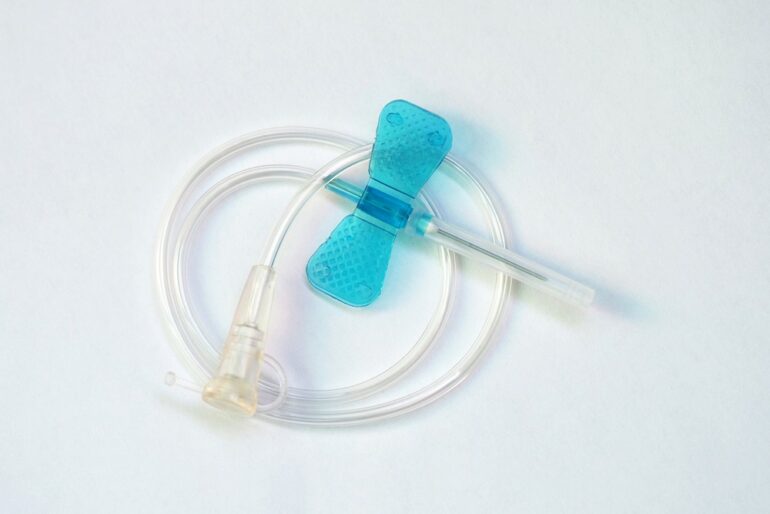Intravenous or IV drug or fluid administration is a standard practice in hospitals. Similarly, the use of the IV route to withdraw blood samples is also a well-established operation in testing centers. While dealing with this route of drug administration, the use of various medical devices is a necessity. One of these devices is a catheter.
The latest development in the previously employed IV catheters has enabled the retraction of the needle possible after use. The possessor of this particular technology is the Insyte Autoguard IV catheter. Let us take a deeper look at its structure, function, and its characteristic features which render it stand out far beyond the regularly used catheters.
What is an Insyte Autoguard IV catheter?
An Insyte Autoguard IV catheter is a catheter that is fitted with a retractable needle to reduce the chances of accidental needle stick injuries. Its safety features enable nurses to work more efficiently without risking their health and safety. Once the Insyte catheter has been inserted into the vein, the white button should be pressed. As soon as the button is pushed, an instant retraction of the needle takes place into the safety barrel.
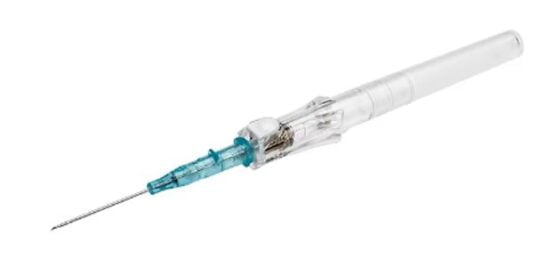
Insyte Autoguard shielded IV catheter
Parts of an Insyte Autoguard IV catheter
The Insyte Autoguard IV catheter has the following components:
- A retractable needle
- A safety barrel with needle retraction as well as encapsulation technology to contain the needle after use
- A flash chamber that acts as a signal
- An activation button to retract the needle after use
- A push-off tab to disconnect the safety barrel from the catheter
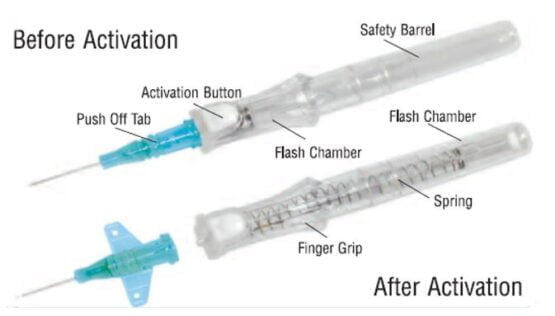
Components of an Insyte Autoguard IV catheter
Sizes of an Insyte Autoguard IV catheter
The Insyte Autoguard IV catheters are available in the following sizes:
| Color | Gauge | Catheter length (inches) |
| Yellow | 24 | 0.75 |
| Blue | 22 | 1.00 |
| Pink | 20 | 1.00 |
| Pink | 20 | 1.16 |
| Pink | 20 | 1.88 |
| Green | 18 | 1.16 |
| Green | 18 | 1.88 |
| Grey | 16 | 1.16 |
| Grey | 16 | 1.77 |
Merits of Insyte Autoguard IV catheter
The Insyte IV catheters possess the following properties as well as merits:
- As the Insyte catheter is made of soft material, the chances of phlebitis or venous irritation with its utilization are significantly reduced.
- These Insyte Autoguard IV catheters, owing to their unique design, can cause a reduction in blood exposure by 95%.
- It is also easy to dispose off the Insyte catheter after use. As the needle is inside the safety barrel, it is easy to handle and clean up the used devices afterward.
- Furthermore, the incidence of blood spilling is also prominently lessened when the Insyte Autoguard catheter is put to use.
How to insert an Insyte Autoguard IV catheter?
For the employment of an Insyte Autoguard IV catheter, the following steps should be taken:
- First of all, choose a suitable site for the injection of the Insyte catheter and wipe it with an alcohol swab.
- Hold the catheter hub and give the barrel a rotation at an angle of 360°. At this point, the catheter must be seated back in the notch.
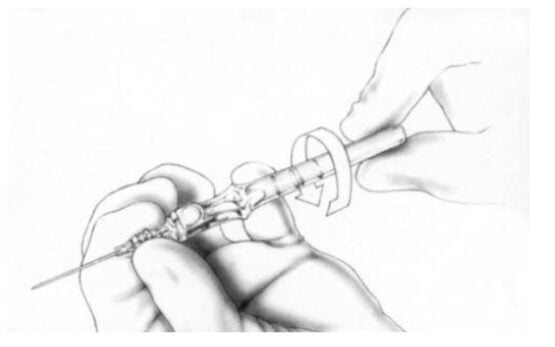
Barrel of the Insyte IV catheter being rotated at 360°
- Approach the vein by keeping the Insyte catheter at a lower angle by keeping the elbow lower.
- Once the initial flashback along the catheter as well as in the flash chamber is visible, move the catheter towards the skin to achieve a parallel position. Insert the needle slowly and swiftly.

A needle is inserted into the patient’s vein
- Release the venous pressure. Meanwhile, the digital pressure beyond the catheter tip should be applied and elevated.
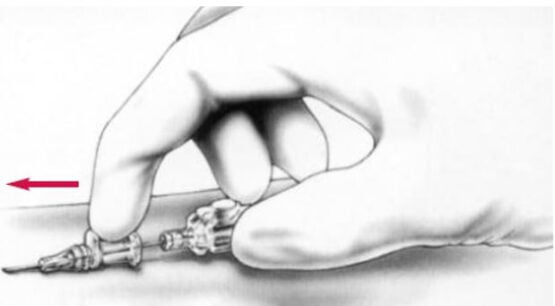
Digital pressure is applied on the catheter tip
- Release the tourniquet and press the activation button to remove the needle.
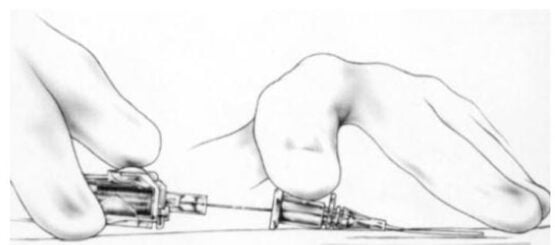
A needle is being removed from the Insyte catheter
- Stabilize the catheter at its place and secure it with a sterile dressing.
Applications of Insyte Autoguard IV catheter
The Insyte Audoguard IV catheter, like all other catheterization devices, finds application in the following:
- The Insyte Autiguard IV catheter can be employed to transfer medications to the patients via the IV route. These medicines particularly include the chemotherapeutic agents which are frequently administered to cancer patients.
- It can also be employed for blood and fluid transfusions.
Side effects of Insyte Autoguard IV catheter
Although, like all IV catheters, these Insyte shielded catheters are safe to use. However, the following indications may appear with the use of an Insyte Autoguard IV catheter:
- If the catheter needle is exposed to the unsterile environment before inserting into the vein, the bacteria present in the air can get attached to the needle which may serve as a means to transfer them into the bloodstream. This may result in a moderate to severe infection.
- Venous irritation with the use of needles, termed phlebitis, is a common issue associated not only with the Insyte catheter but also with all kinds of needle-based medical devices.
Precautionary measures
The following precautionary measures must be taken while dealing with the Insyte Autoguard IV catheter:
- The tip seal must be released prior to the insertion of the Insyte IV catheter into the body.
- The needle of the Insyte Autoguard IV catheter must not be withdrawn from the catheter hub prior to pressing the activation button.
- Once removed, the needle must never be re-inserted into the catheter.
Conclusion
Catheters are commonly used in hospitals to draw multiple blood samples, transfuse blood or other fluids, as well as to administer chemotherapeutic agents among other medications. Their vast employment has led to various ideas related to further improvements in their design and functionality. Owing to these, the problem of accidental needle stick experiments has been solved by installing a retractable needle into the Insyte Autoguard IV catheter. This has become the cause of a significant reduction in needle-related incidents which may jeopardize the nurse’s safety. Hence, the Insyte catheter possesses one of the finest designs and delivers efficient services.

PhD Scholar (Pharmaceutics), MPhil (Pharmaceutics), Pharm D, B. Sc.
Uzma Zafar is a dedicated and highly motivated pharmaceutical professional currently pursuing her PhD in Pharmaceutics at the Punjab University College of Pharmacy, University of the Punjab. With a comprehensive academic and research background, Uzma has consistently excelled in her studies, securing first division throughout her educational journey.
Uzma’s passion for the pharmaceutical field is evident from her active engagement during her Doctor of Pharmacy (Pharm.D) program, where she not only mastered industrial techniques and clinical case studies but also delved into marketing strategies and management skills.
Throughout her career, Uzma has actively contributed to the pharmaceutical sciences, with specific research on suspension formulation and Hepatitis C risk factors and side effects. Additionally, Uzma has lent her expertise to review and fact-check articles for the Health Supply 770 blog, ensuring the accuracy and reliability of the information presented.
As she continues her PhD, expected to complete in 2025, Uzma is eager to contribute further to the field by combining her deep knowledge of pharmaceutics with real-world applications to meet global professional standards and challenges.

